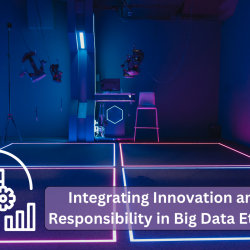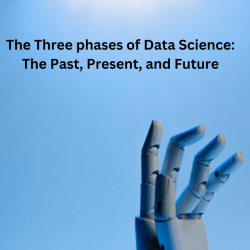US nuclear lab increases reactor safety and efficiency with new AI technology

Introduction to US nuclear lab is utilizing new AI technology
Welcome to our blog where we will be discussing how a US nuclear lab is utilizing new AI technology to increase reactor safety and efficiency. This groundbreaking development has the potential to revolutionize the nuclear energy industry and bring about numerous benefits.
Let’s start by understanding what this US nuclear lab has achieved. With the use of advanced AI technology, they have been able to collect and analyze vast amounts of data from their reactors. This has allowed them to identify patterns and trends that were previously undetectable by humans.
One of the greatest benefits of integrating AI technology in the nuclear energy industry is improved safety measures. By analyzing data in real-time, AI can detect abnormalities or irregularities that may pose a threat to reactor operations.
Moreover, AI also helps in optimizing reactor efficiency. With its ability to process large amounts of data quickly, it can identify areas where improvements can be made for better performance. This leads to cost savings for companies and increases the overall efficiency of their operations.
One aspect that makes AI truly valuable is its capability for predictive maintenance. Traditionally, reactors are shut down for routine maintenance, which might not always be necessary at that time. However, with real-time data analysis and machine learning algorithms, AI systems can predict when maintenance is needed based on actual usage and performance metrics.
Understanding AI Technology and Its Applications in Nuclear Facilities
Firstly, it’s important to note that the use of AI in nuclear facilities is not a new phenomenon. However, advancements in this technology have made it even more crucial for enhancing safety and efficiency in these settings. One prime example of this can be seen at a US nuclear laboratory, where they have successfully implemented new AI technology in their reactors.
The AI system works by continuously monitoring and analyzing real time data from the reactors. This includes information on reactor temperature, pressure, and other critical parameters. By doing so, the system can quickly identify any abnormalities or potential risks and make necessary adjustments to ensure optimal performance.
This brings us to the second key point reducing human error. With the use of AI technology, the risk of human error is greatly reduced as there is less need for manual intervention. This not only increases safety but also improves overall reactor operations. The system can detect patterns and trends that may go unnoticed by humans, allowing for quicker identification and resolution of any issues.
Moreover, implementing AI technology has also led to cost savings for the US nuclear lab mentioned earlier. With increased efficiency and reduced downtime due to faster detection of issues, there are fewer disruptions to operations resulting in cost savings over time.
How US Nuclear Labs Are Implementing AI Technology for Reactor Safety and Efficiency
The United States is home to several renowned nuclear laboratories, including Lawrence Livermore National Laboratory, Argonne National Laboratory, and Los Alamos National Laboratory. These labs play a crucial role in advancing research and development for nuclear energy, weapons, and security. And as technology continues to evolve, they have turned to AI as a solution for enhancing reactor operations.
One of the key areas where AI is being utilized in US nuclear labs is in reactor safety. With the potential risks associated with nuclear reactors, safety measures must be taken seriously to prevent accidents or disasters. AI technology offers advanced predictive capabilities that can analyze vast amounts of data from various sensors and instruments within a reactor.
Moreover, these predictive capabilities also enable automatic responses in case of emergency situations. For example, if there is a sudden increase in temperature or pressure within the reactor vessel, AI systems can automatically shut down the reactor before it escalates into a critical situation.
Aside from safety measures, implementing AI technology also contributes significantly to improving efficiency within nuclear reactors. Reactors require precise control and monitoring to maintain optimal performance levels while adhering to strict regulatory standards.
Benefits of Using AI Technology in Nuclear Reactors
You may be wondering, what exactly is AI? In simple terms, AI involves using computer systems to perform tasks that typically require human intelligence. The ability to learn from data and make decisions based on that information sets AI apart from traditional programming. And this technology has now made its way into the nuclear industry.
The US Nuclear Lab is one of the first institutions to adopt AI technology for their reactors. By analyzing large amounts of data in real-time, AI can detect any abnormalities or potential risks that may arise within the reactor. This information is then relayed to the operators, allowing them to take immediate action before a problem escalates.
This revolutionary use of AI has greatly improved safety measures in nuclear reactors. The quick detection of anomalies allows for timely interventions and prevents any major accidents from occurring. Additionally, this technology also minimizes human error and reduces the need for manual inspections, thus improving overall plant safety.
Not only does AI enhance safety, but it also greatly improves efficiency in nuclear reactors. Through continuous analysis of data, AI can identify patterns and trends that contribute to optimal reactor performance. This data driven approach ensures that the reactor is operating at its full capacity while minimizing downtime for maintenance or repairs.
Future Potential and Advancements of AI Technology in the Nuclear Industry
The United State’s nuclear lab is leading the way in adopting AI technology for enhancing its reactor operations. By employing this advanced technology, the US nuclear lab has successfully improved safety measures and increased efficiency in their operations.
AI technology allows for real time monitoring of reactor operations, enabling operators to detect any abnormalities or potential issues before they escalate. With traditional methods, it was challenging to monitor all aspects of a reactor simultaneously. However, with AI, operators can now track multiple parameters continuously and make informed decisions quickly.
Moreover, reactors equipped with AI systems are also capable of self diagnosis and self correction. This means that they can identify and correct any malfunctions without human intervention swiftly. It eliminates the need for manual troubleshooting, which can be time consuming and prone to human error.
In addition to improving safety measures, AI technology also enhances efficiency in reactor operations. The system can analyze data from various sensors in real-time and provide insights on how to optimize performance and reduce downtime. It enables operators to adjust parameters based on real time data, resulting in more efficient energy production.
With AI systems handling routine operational tasks, operators can focus on strategic decision making processes that require human intervention. They can use their expertise to come up with innovative solutions that improve overall plant performance.
Importance of Integration between Traditional Safety Measures and Modern Technologies for the Improvement of Nuclear Reactors
Have you ever wondered how nuclear reactors operate with such precision and safety? The answer lies in the integration between traditional safety measures and modern technologies. In recent years, advancements in technology have greatly improved the safety and efficiency of nuclear reactors. One such advancement is the use of Artificial Intelligence (AI) technology, which has been successfully implemented by US nuclear labs.
Firstly, let’s understand what traditional safety measures refer to. These include physical barriers, emergency response plans, and human operator monitoring systems. These measures have been in place for decades and are crucial in ensuring the safe operation of nuclear reactors. However, they do have limitations as they rely heavily on human intervention.
This is where modern technologies like AI come into play. AI technology uses algorithms to analyze data from various sensors and predict potential safety risks. This greatly enhances the accuracy and speed at which potential issues can be detected, allowing for quicker responses and minimizing risks.
US nuclear labs have recognized the importance of integrating AI technology into their operations. In 2020, Oak Ridge National Laboratory (ORNL) successfully implemented an AI system in their High Flux Isotope Reactor (HFIR). The system monitors over 6,000 sensors and can detect anomalies within milliseconds.






Ingen kommentarer endnu